By the time my generally unenjoyable ten week stay on the almost birdless island of Guam was over, I was absolutely ready to return to the practice of making observations of beautiful and interesting birds again, especially since I was already tantalizingly close to achieving my primary goal for the Tour. I expected that Palau would provide a reasonably good locale for that objective, since it possess a list of species that is rather large for an oceanic archipelago, including at least twelve endemics. I was somewhat fortunate that I had a longer than expected stay in the country, for, while in the end I did see a good percentage of the resident species, the overall ease of doing so was not especially high. In particular, my efforts at photography were greatly lacking on that occasion. Indeed, while many of the nicest birds stubbornly refused to present themselves in a manner that would lead to pleasing images, I must admit that my rusty skills, probably compounded by my still slightly wobbly demeanor, were the most important factors that lowered my number of nice photographs.
As often happens, a relatively fast start in a new location led to a certain amount of optimism that would later fade. In fact, the first bird of the country, Micronesian Myzomela was seen very shorty after I checked in to my self-isolation hotel. This example exhibits one of the pitfalls of bird photography in the tropics, namely the foggy-lens effect caused by dashing out of a cooled room, into the much more humid ambient environment, upon seeing an interesting bird through the window.
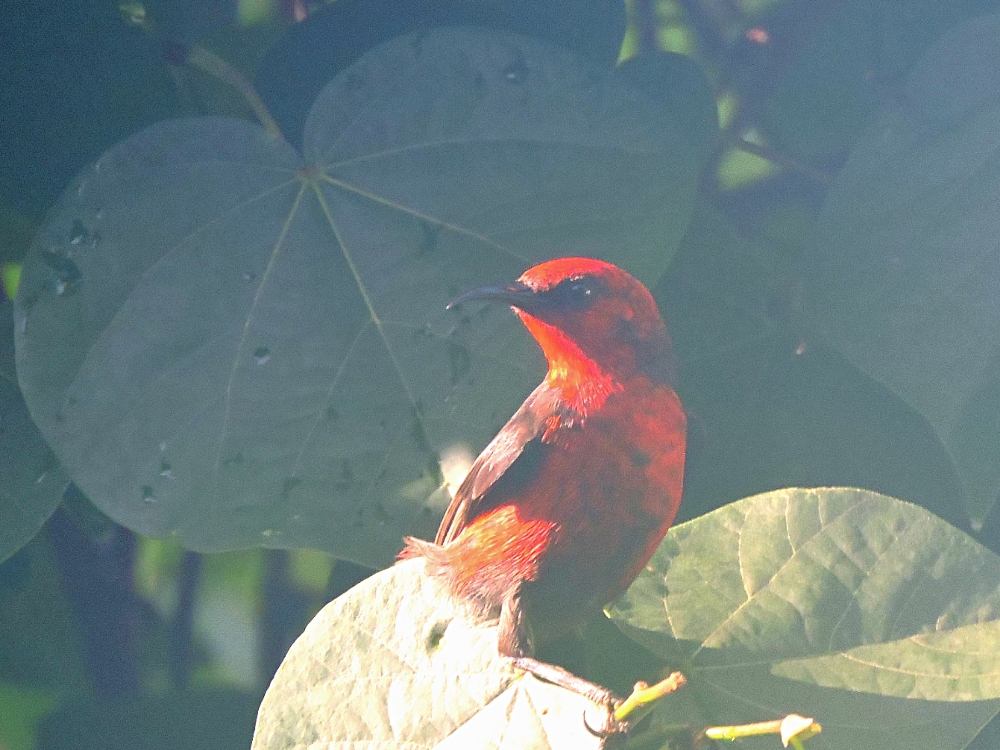
A similar situation befell another easily seen bird, the rather widespread Chestnut Munia.
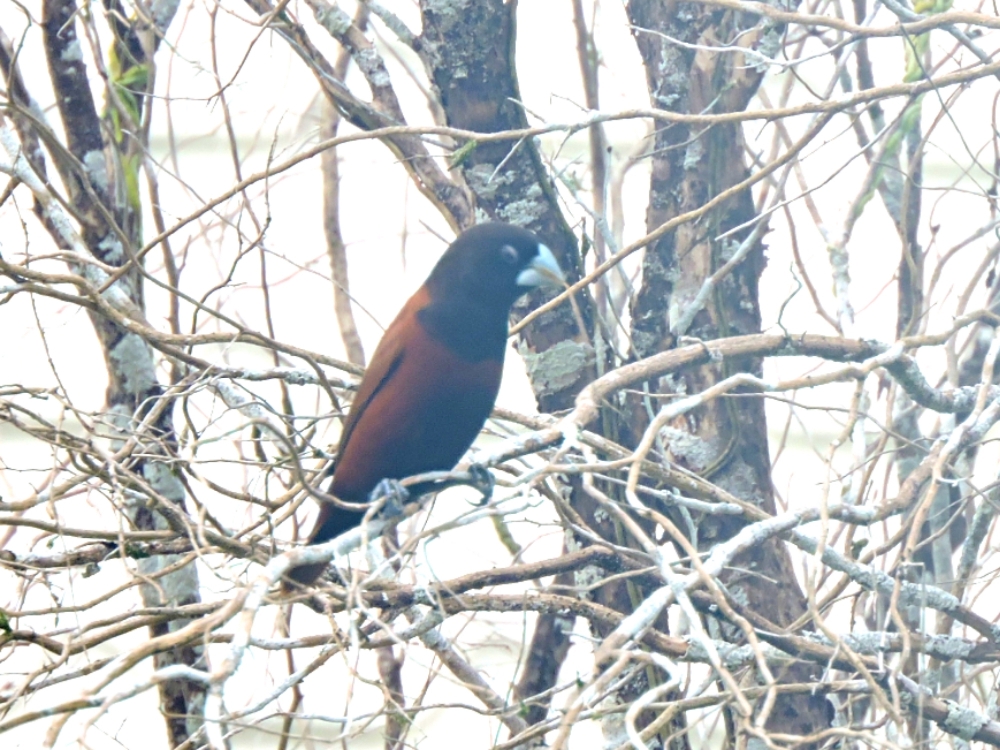
While still in Koror, I had better luck with my first of the endemics, Palau Flycatcher. Another, Palau Swiftlet, was omnipresent, but like all members of that order, practically impossible to image.
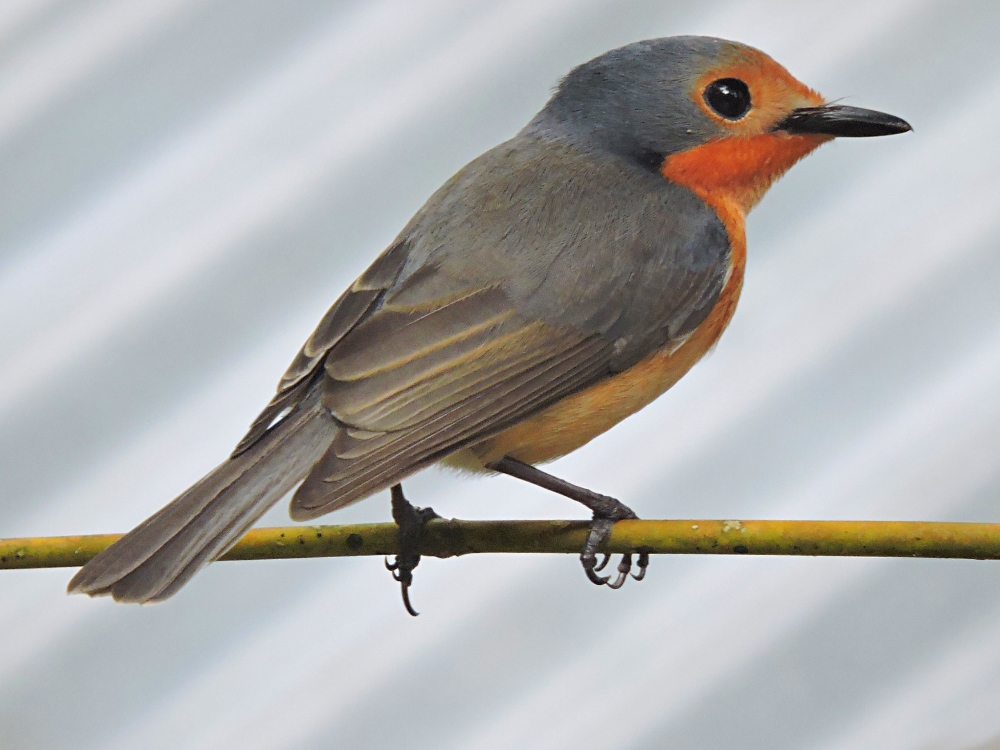
Also in Koror is a well-known birding site, Long Island Park, which I looked through on several occasions, including one of the monthly meetings of several local birders. While I made some fleeting observations there, most were rather unsatisfying. The best was probably a group of Blue-Faced Parrotfinch, of which only this juvenile, too young to possess its blue face, posed somewhat adequately.
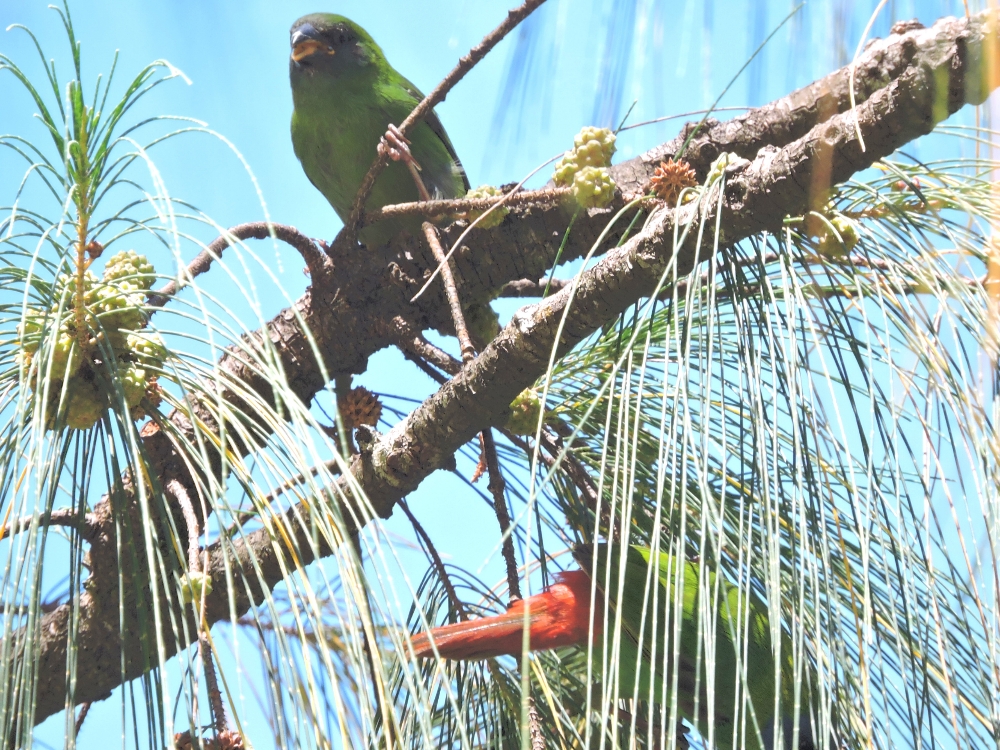
On my last stop at that park, when the local birders were around, I finally added the third of three White-Eyes found in Palau, Caroline Islands White-Eye.
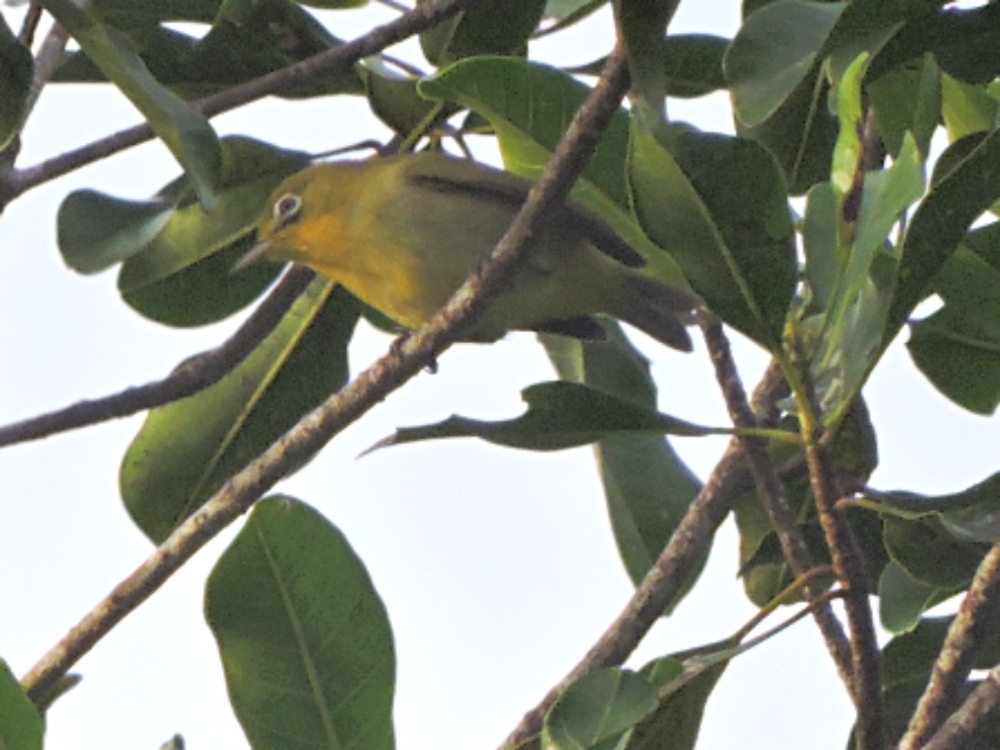
The other two species from that family, neither of which really have the namesake white eye rings, but are both endemics, were seen when I was on Peleliu. Dusky White-Eye was fairly common, but I accidentally deleted the only tolerable photo I took of that species. The somewhat more enigmatic Giant White-Eye, was not much better.
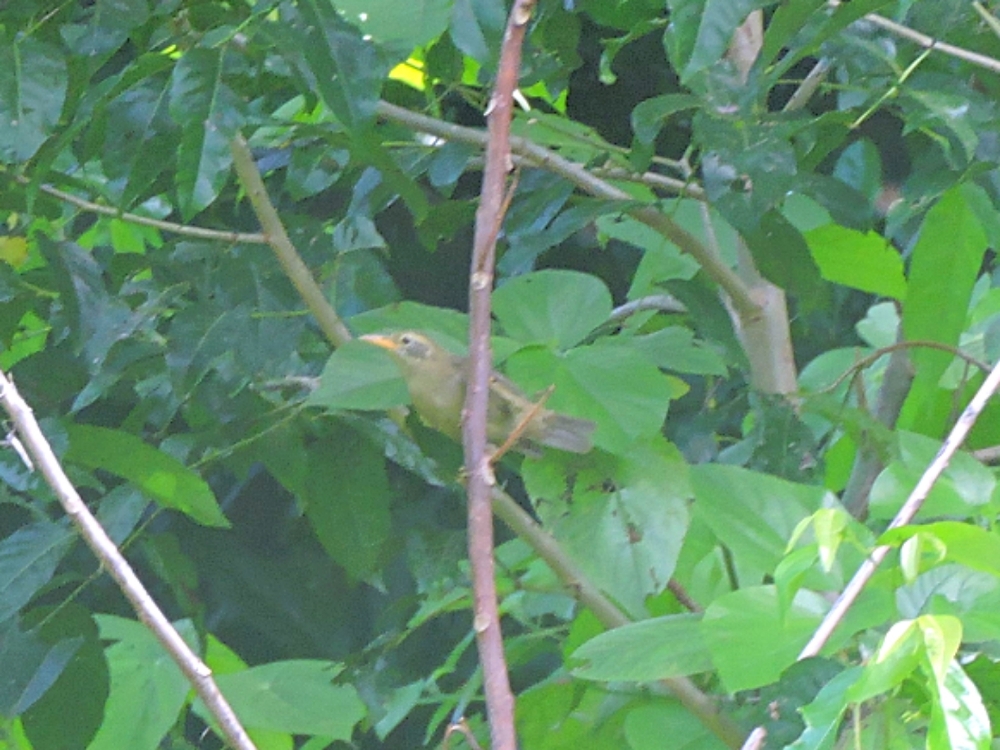
While moving between islands by sea, I hade several opportunities to pick up various marine birds, in this case terns. Of course, a fast moving boat is not always the best situation for taking photos. I was unable to adequately image the Black-Naped Tern that I saw on two occasions, and had only marginally better results with the very abundant Black Noddy, and the less common Bridled Tern.
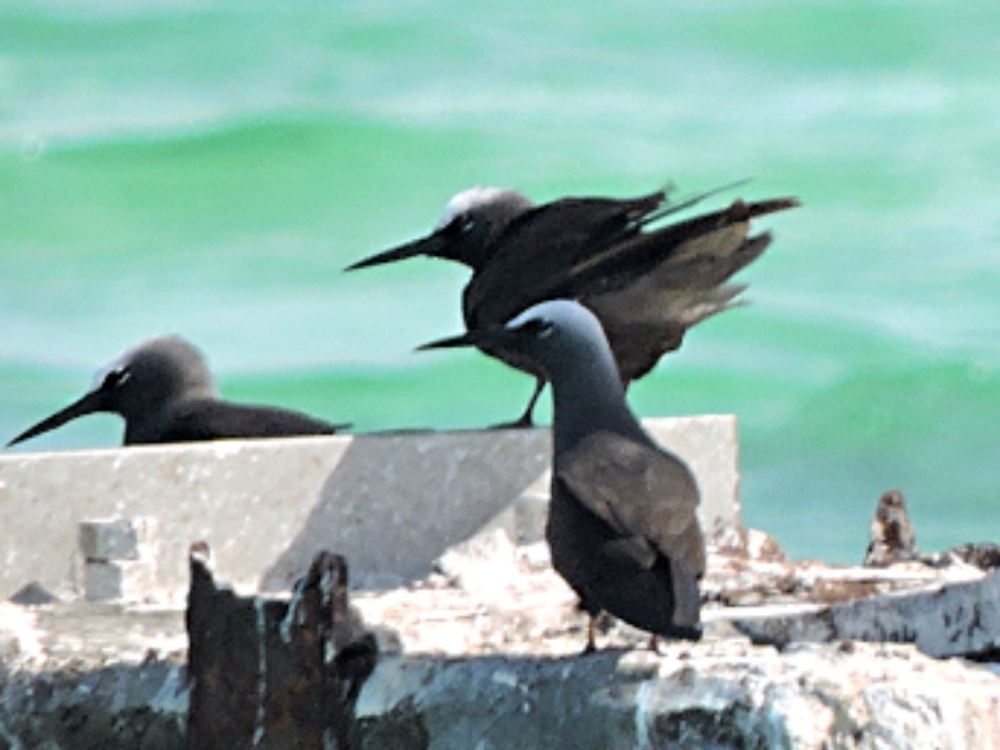
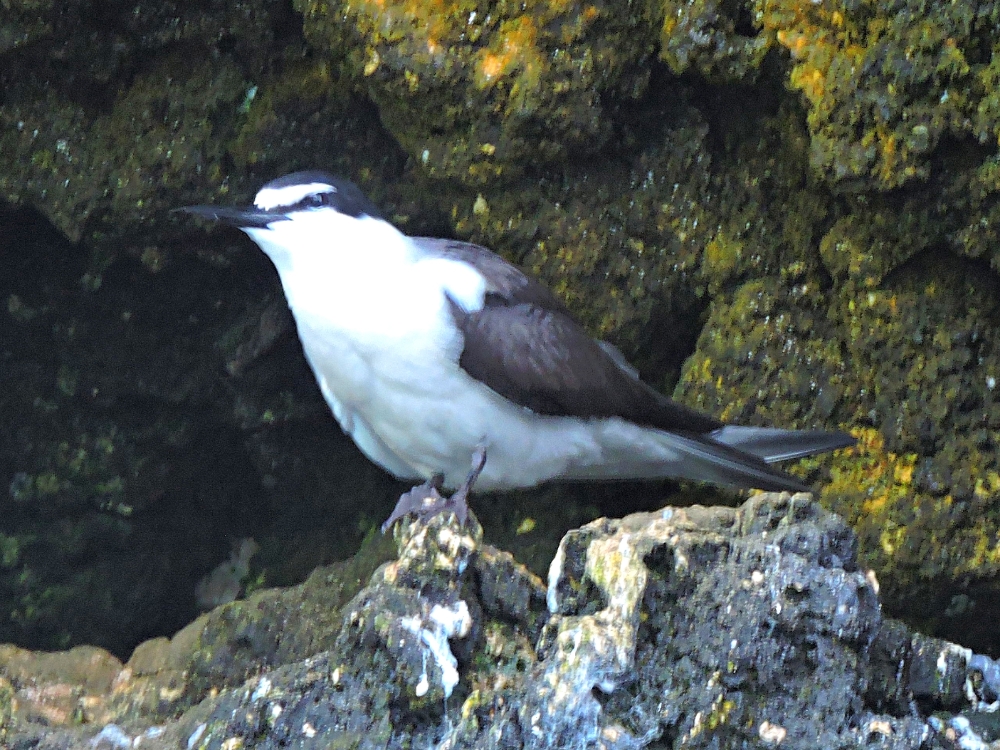
Also while I was on Peleliu, I took the opportunity to visit the North Peleliu Sandflats an Important Bird Area, and one of the only locations for several hundred kilometers where migrating shorebirds can rest and feed. There were three species possible for me there (at the time I thought it was four, but I had forgotten that I had already seen Curlew Sandpiper in Kenya earlier in the year,) and it may not have been worth the effort for me to drag the canoe I rented over the last fifty meters of thigh-deep sand to get to the low-tide shoreline, a task that felt like it nearly killed me. For in the end I only added the common and easy to see Red-Necked Stint that day.
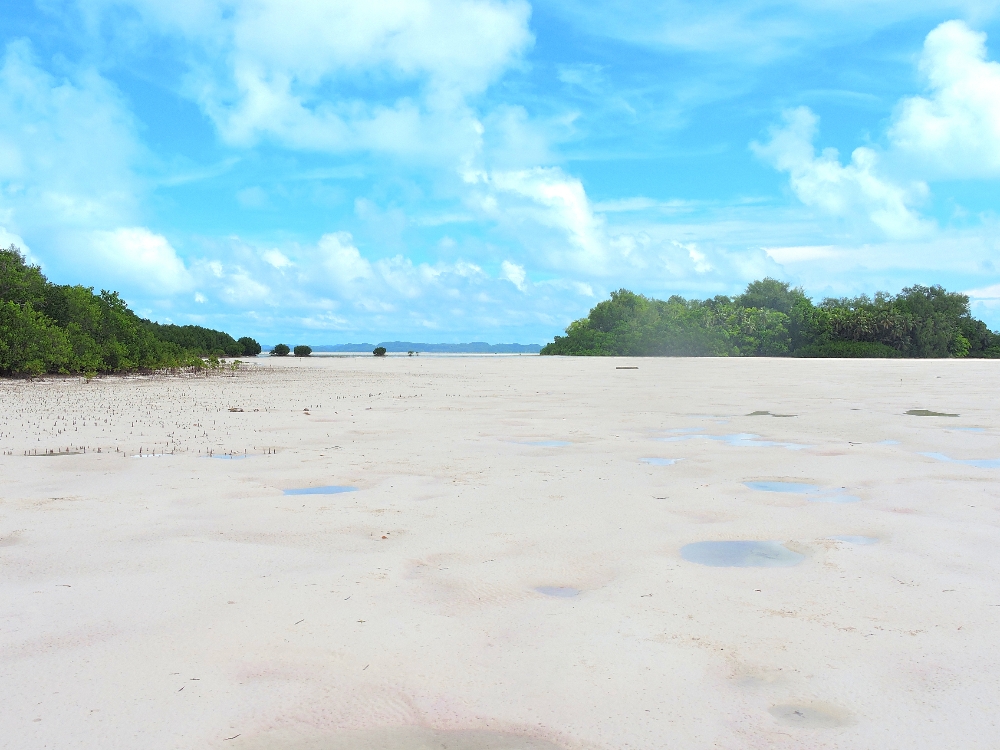
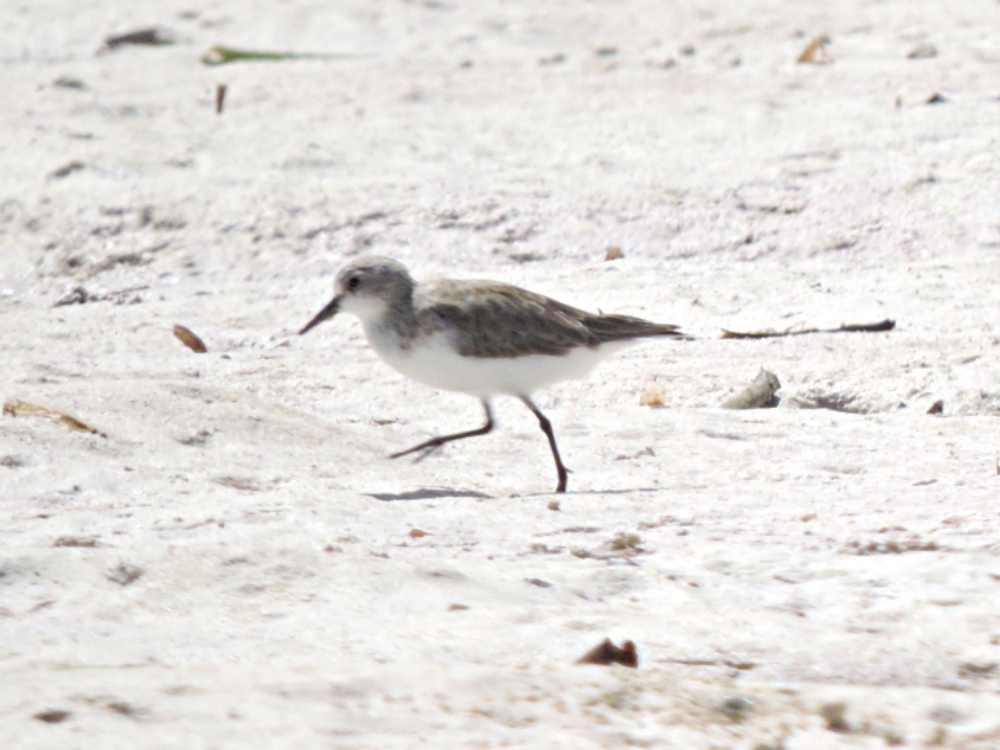
However, Sharp-Tailed Sandpiper was gracious enough to show up right outside my room the next day.
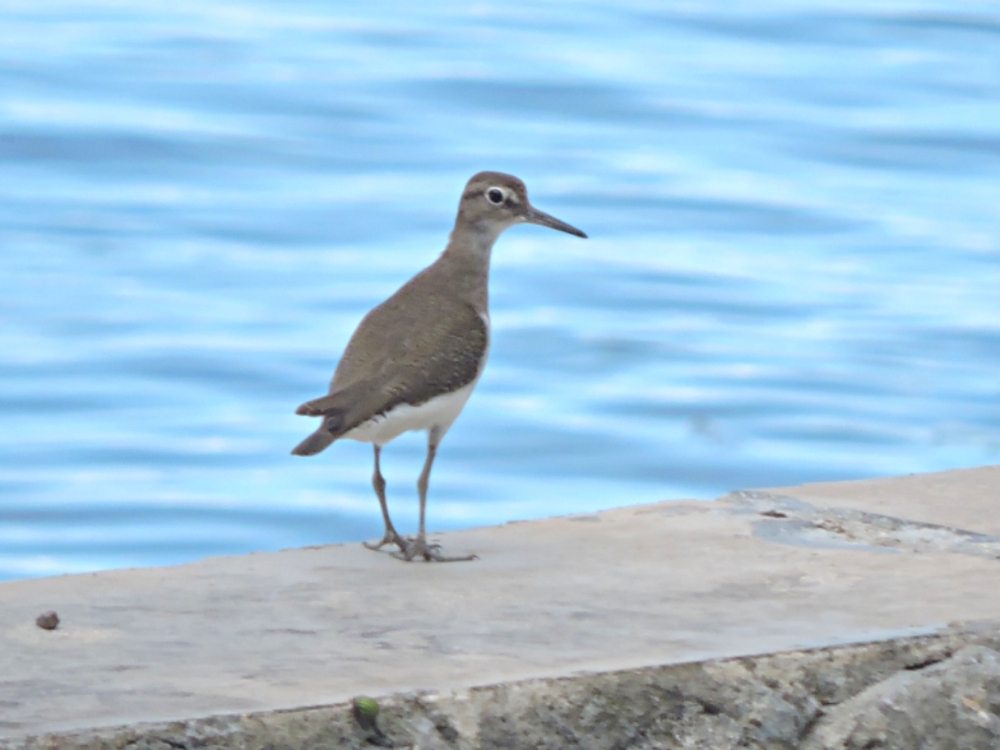
The big miss that day was the increasingly rare Far-Eastern Curlew, which had been recently reported on the sandflats. Unfortunately, time and tides prevented me from walking to the sea side of the flats, where they were more likely to be found. That species is the real-life origin for the mythical Palauan money-bird,
the Delerrok. The early Palauan society used beads or disks made of various substances as currency, and it was said that the Delerroks brought those objects to the islands, depositing them there as they would normally lay an egg. While I never saw the real bird, representations of this important species were very prevalent on important structures and buildings throughout the islands.
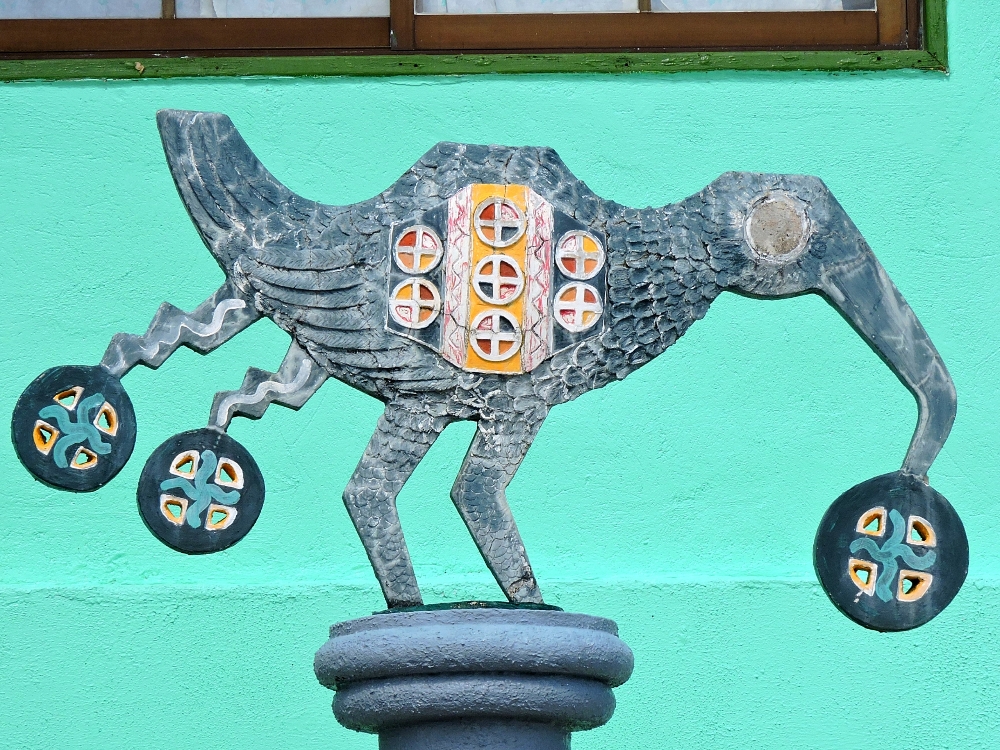
Peleliu, with its easily-accessible forest, was probably the most facile location for sightings, if not for photos, and in the gardens around the place I was staying I added a few new species, including two endemics, Morningbird, (this hyperactive individual has some leucistic feathers which gave me some identification trouble,) and Palau Fantail.
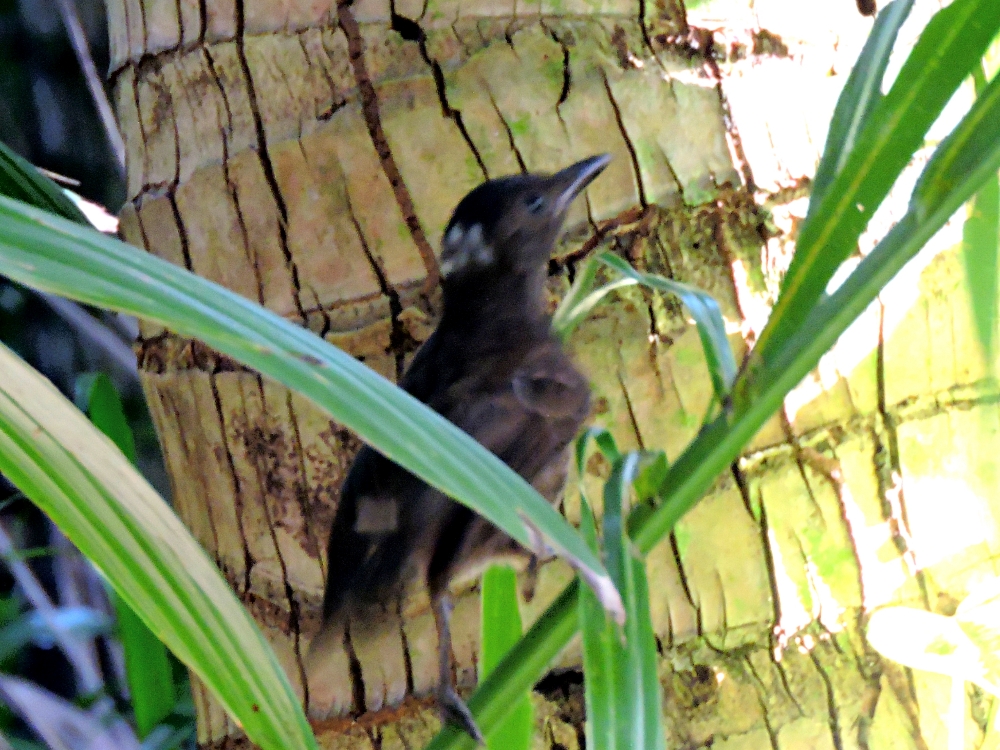
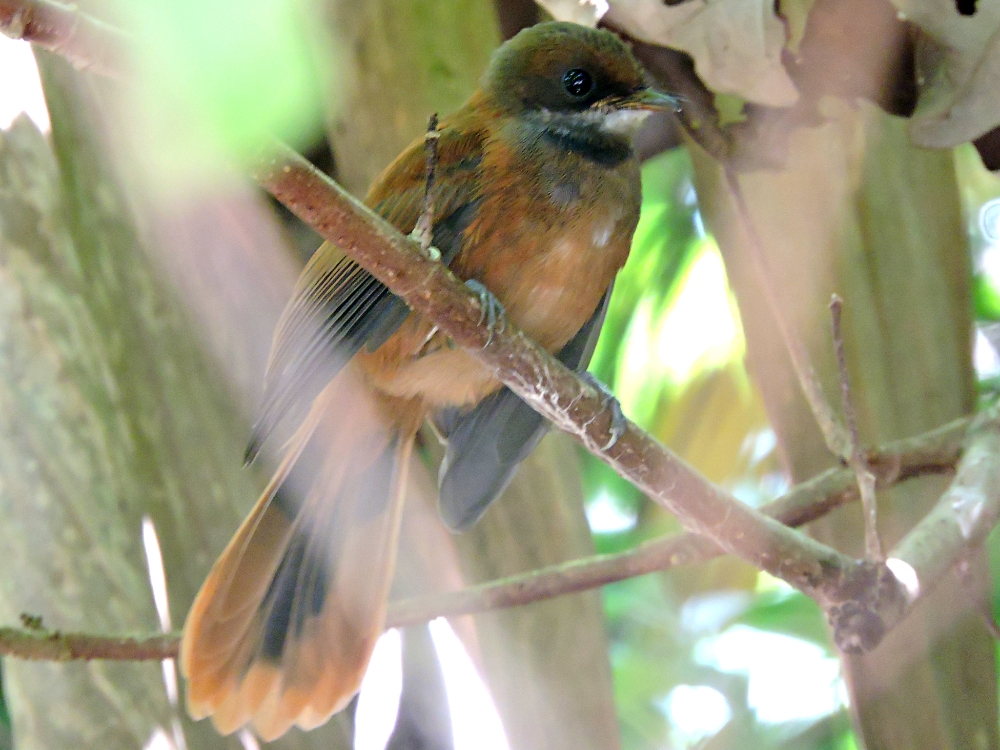
My last main stop, Babeldoab, was not expected to yield very much that was new, especially since I felt too exhausted to drag myself uphill to its best birding spot. Nevertheless, in the forest just back from the beach at Melekeok, I had fleeting sightings of two more endemics, Palau Kingfisher, and Palau Bush-Warbler.
My last opportunity to obtain decent photos of some of the most interesting species was on Ulong Island, which I was finally able to visit on the morning of my final day in the country, just before my late-night flight. I had one previous microseconds-long sighing of a pair of the near-endemic Micronesian Scrubfowl on Peleliu, but Ulong is said to be the best place for that species. After a couple of even shorter, and somewhat tentative, encounters, I was bracing myself for failure again. Then, with a sudden start, one burst out into a more open patch of forest, being chased around in circles by another of its kind for about thirty seconds. They are almost flightless, but can move exceedingly fast on the ground and so this was the only photo I was able to obtain. I normally wouldn’t post such a laughably bad image (the vaguely bird-shaped object in the center is the Scrubfowl,) but I find this one to be a little humorous, and it does fit in with the general theme of this post.
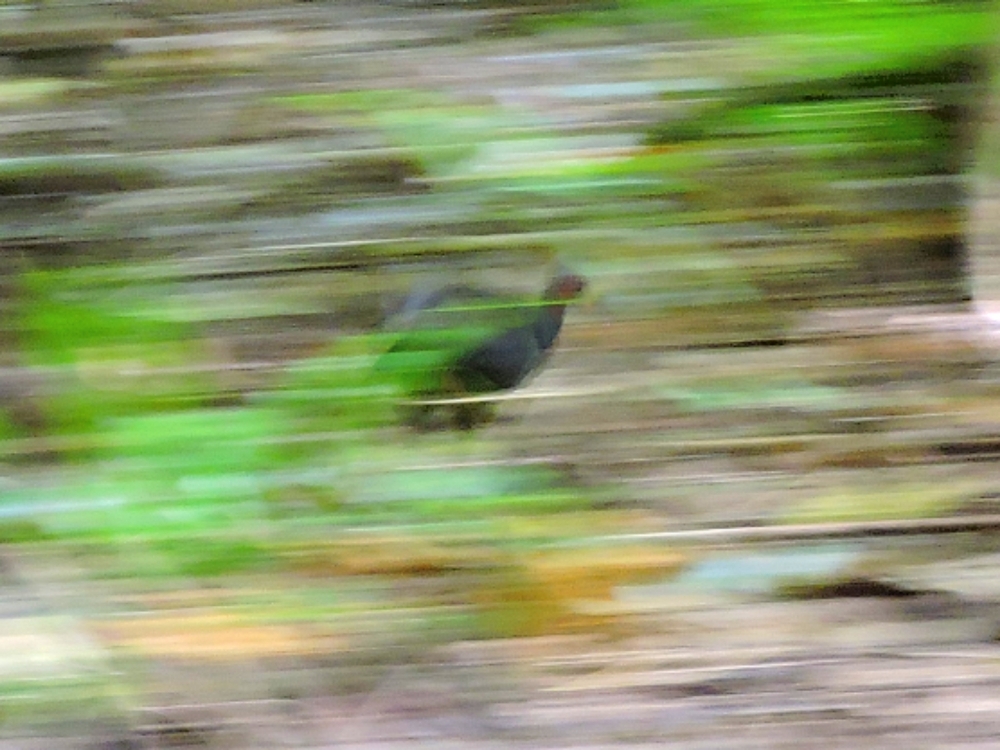
I was also steadying myself for more disappointment with my apparent failure for not even being able to attempt one single photo of one of the best birds of the islands. There are few notable instances where, in a certain geographic area of the globe, a family of birds that is normally drab and uninteresting has evolutionarily exploded into a multitude of intensely colorful and beautiful species. Starlings in Africa are a perfect example of this. In the western Pacific region, Pigeons and Doves also proudly exhibit that effect. Palau has one near-endemic Pigeon and two endemic Doves, all of which would be top targets for any birder. Unfortunately, I missed on the increasingly-difficult-to-observe Palau Ground-Dove, and the Micronesian Imperial-Pigeon only provided two brief fly-pasts.
It was the third species, the national bird of Palau, that I was most interested in seeing, however. That species was quite abundant, and its distinctive calls could be heard just about everywhere, except right in the center of Koror. I did have numerous sightings but they were all cases of the birds bursting out from the trees, sometimes flying right in front of my face, only to disappear back into the greenery moments later. That was frustrating because a beautiful bird, as this species is, should really be recorded with even a poor photograph. On Ulong, just as it was time to head back to Koror for my flight, I thought well, maybe I should take one more quick walk down this short trail.
That was fortunate, because I just happened to look up at the right time and, high in the canopy, well-blended into the leaves, the bird I had been trying to image for weeks was moving about. Palau Fruit-Dove. Of course, it was determined to avoid posing properly for me, and this crude image, with very muted colors, was the best I could manage, but you get the idea. I can’t complain much, since I finally captured this highly-desirable species literally at the very last possible moment.
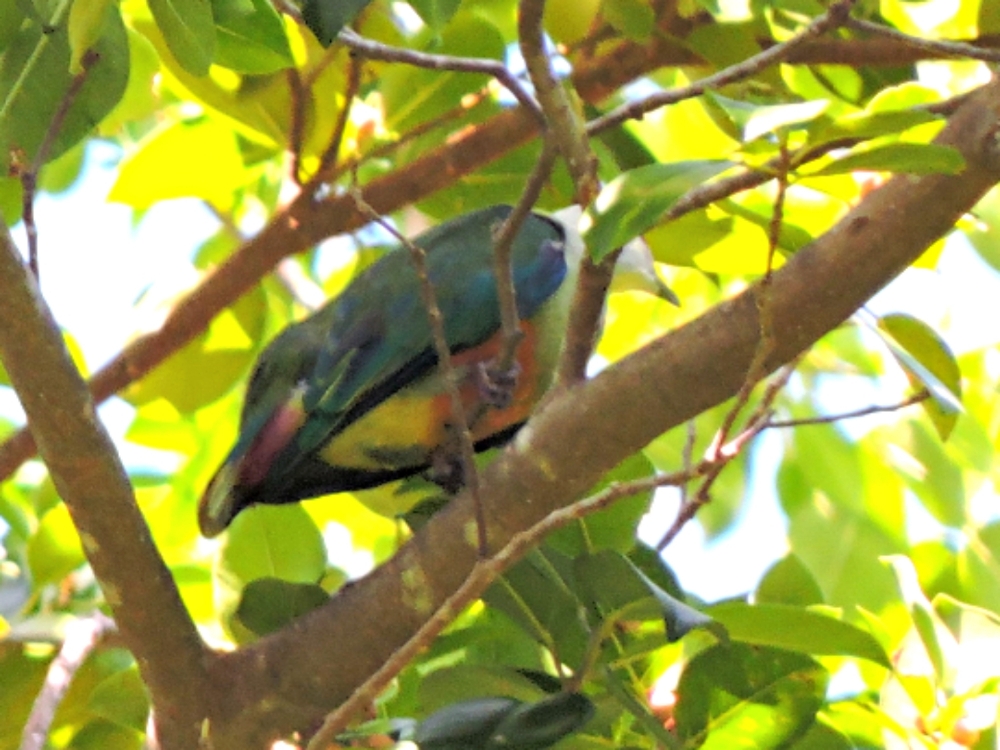
Twenty new species in Palau, including nine of the endemics, felt adequate, though I needed my entire long visit to make that happen. My next destination has even more amazing birds, but my visit there may be a little more rushed. I hope I can return to better form once I get there, especially since that might be where my main birding goal for the Tour is finally achieved.